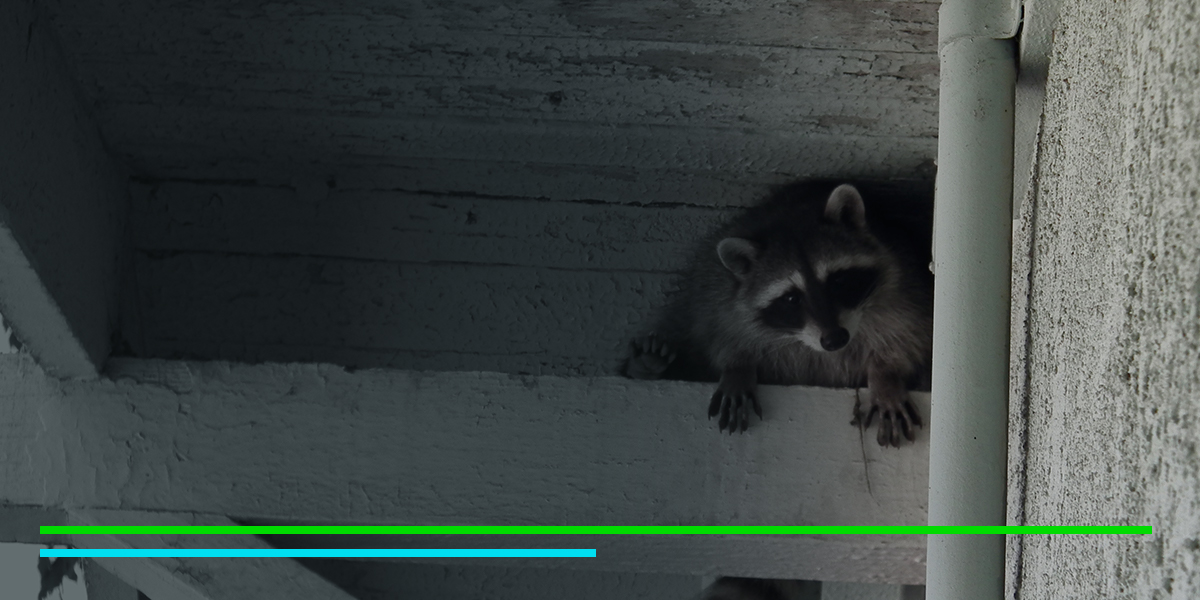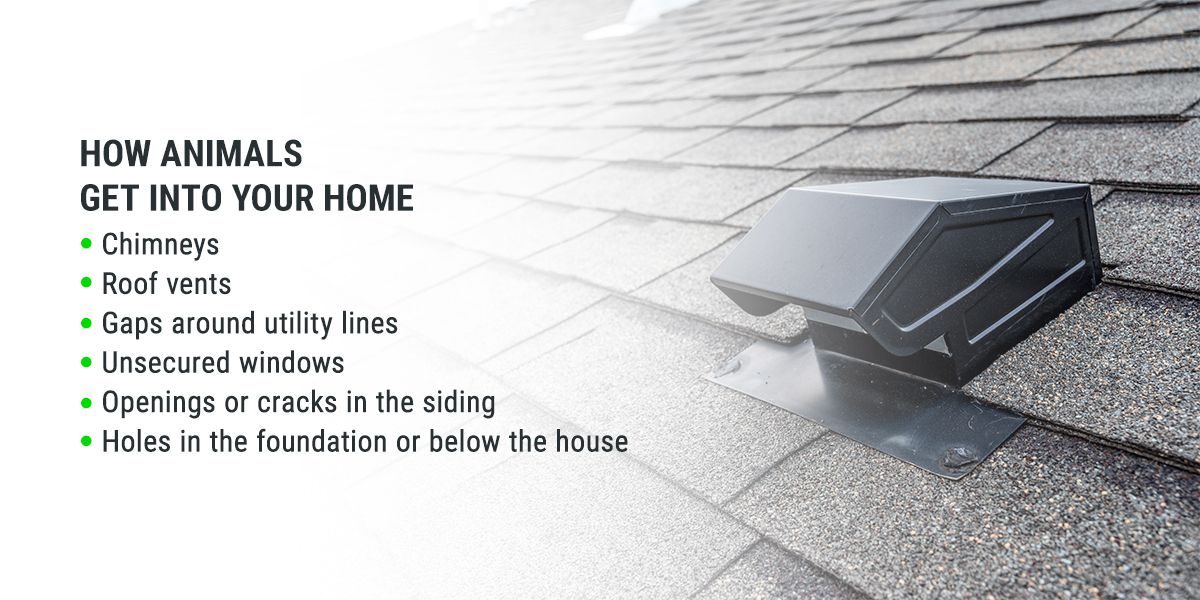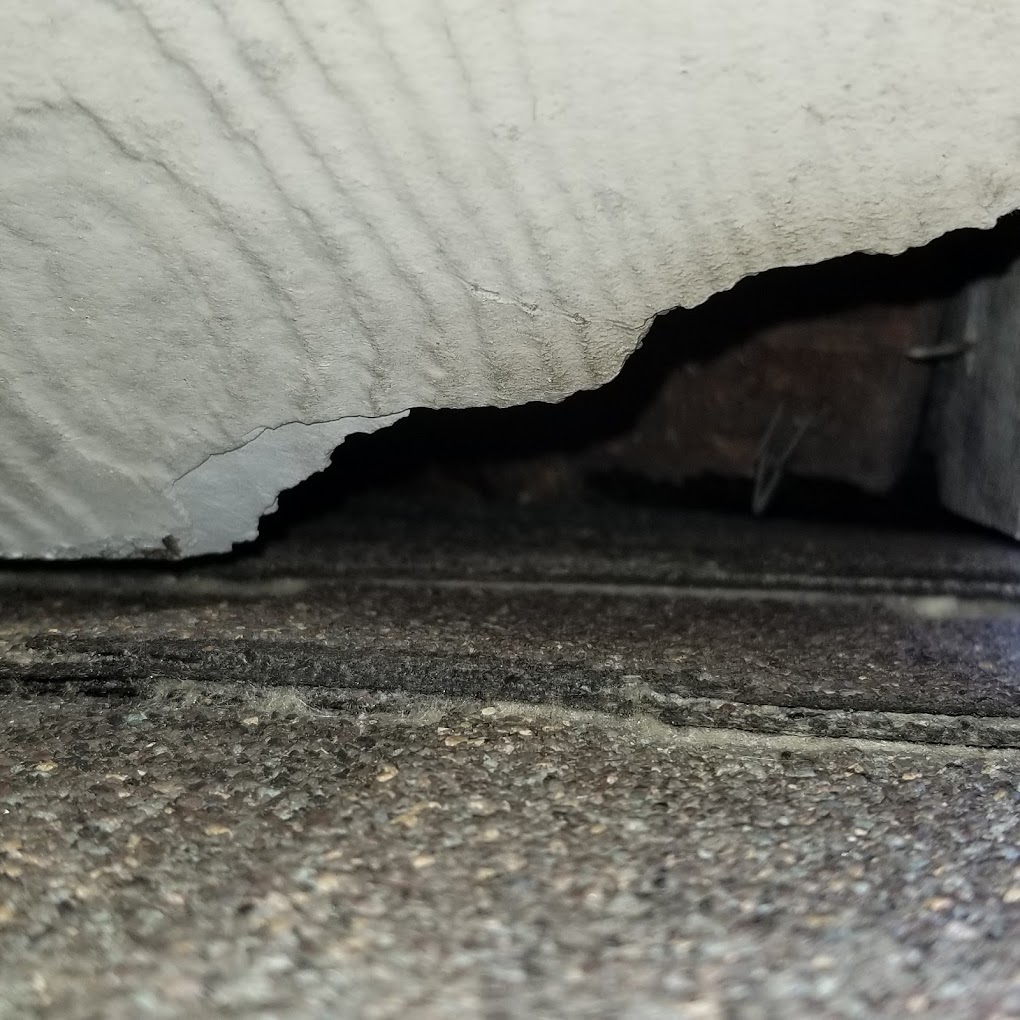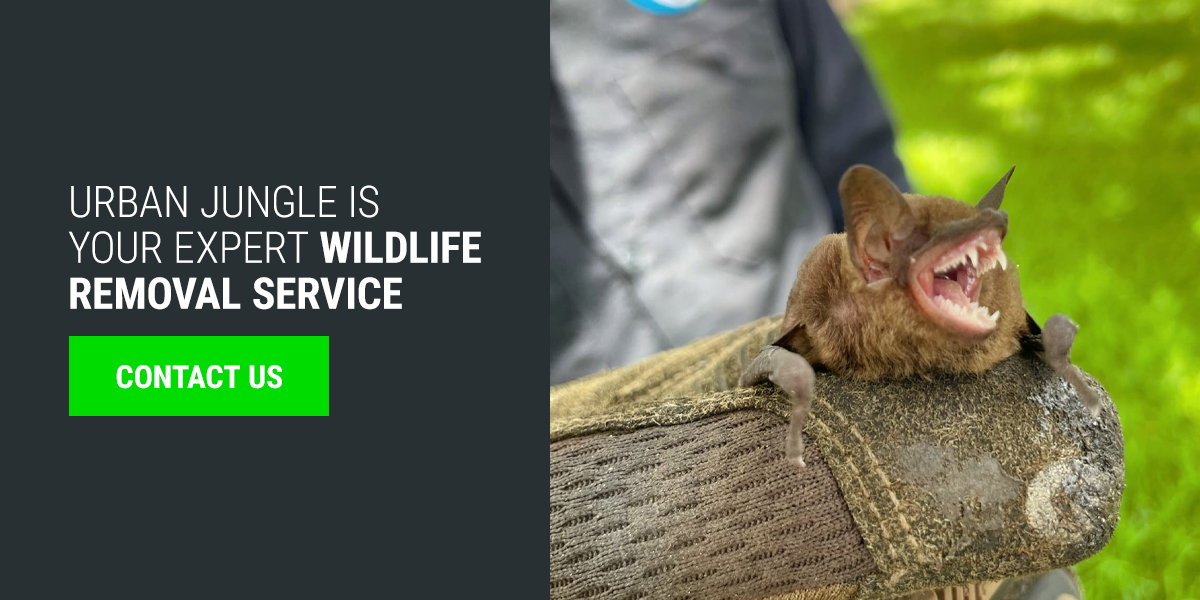Creatures in Texas do their best to stay warm when temperatures drop. It’s easy to pity them when you’re warm and cozy inside. Still, animals have undergone centuries of adaptations that help them survive harsh weather conditions, from migrating south for the winter to hibernating in a safe place.
However, some animals forego these survival techniques and seek shelter from the cold in your warm, inviting home. Unfortunately, wildlife can cause many problems. If you’ve noticed any telltale signs of a wildlife infestation in your home, such as droppings, paw prints or strange noises at night, you may need to contact a wildlife removal service. If your home is wildlife-free, you can take a proactive approach and prevent future infestations.
Why Animals Use Your Home for Shelter During Winter
Animals have the same basic survival needs as we do — food, water and shelter. Most animals are more than capable of providing for themselves. Still, harsh conditions, like those we face in wintertime, can lead to unmet needs.
Texas winters can be variable and unpredictable. Depending on where you live winter may bring prolonged frigid temperatures or icy blasts that dramatically drop the temperature for periods before returning to more moderate weather. These conditions may negatively impact an animal’s access to resources. If their usual methods of procuring food and water become inadequate or they can’t properly regulate their body temperate, they may turn to your property for assistance.
Animals can find resources in many parts of your home:
- Attics make the perfect ready-made den with insulation or stored clothing.
- Utility rooms offer a consistent source of hydration if your appliances leak.
- Kitchen floors can become a wildlife cafeteria if crumbs aren’t swept up.
- Pantries may become an animal’s own personal food stash.
Animals Commonly Found In and Around Your Home During Winter
Animals big and small can set up shop in your residence. Here is a list of common types of animals that may enter your home in the winter:
- Mice
- Rats
- Squirrels
- Birds
- Bats
- Raccoons
- Opossums
- Armadilloes
The garbage cans outside your home can provide bigger animals with a satisfying meal. These animals may include:
- Deer
- Coyotes
- Foxes
How Animals Get Into Your Home
Wildlife can gain entry to your property in many ways. They may escape the cold using the following entry points:
- Chimneys
- Roof vents
- Gaps around utility lines
- Unsecured windows
- Openings or cracks in the siding
- Holes in the foundation or below the house
Once inside, these resourceful animals may make themselves at home wherever they feel safe and warm, such as in the attic, crawlspaces, or storage containers of clothing and bedding. Birds are drawn to chimneys, eave returns and vents where they can build nests. Like birds, bats may also be drawn to chimneys and eave returns, but will also roost in other holes or gaps much to small for birds along the siding.
Why It’s a Problem
Although they may seem harmless, animals that seek shelter in your home during wintertime can cause problems, from creating structural damage to possibly spreading sickness to the people and pets in your household:
- Injury: Wildlife attacks can happen if you attempt to remove the animal yourself. Invading animals may have their young close by, and they may lash out, potentially injuring you, if they feel threatened.
- Destruction: Mice and rats love to chew on anything they can find because their teeth are constantly growing. They will gnaw their way through wood, plastic, vinyl, rubber, aluminum and even the electrical wires and plumbing in your home. Animals like raccoons will not intentionally damage ductwork to vent the warm air into the attic space.
- Waste: Many rodents are partial to the insulation in your walls because it creates a cozy and quiet space. They can cause destruction and leave waste and food behind, leading to mold and rot inside your walls. Raccoons and opossums will defecate and urinate throughout the attic.
- Illness: Unfortunately, animals are often vectors of diseases like rabies or parasites such as fleas and ticks. If diseases or parasites are present in your home, you, your family and your pets may be unsafe.
How to Keep Animals Out of Your Home in Winter
Prevention is the best way to keep animals out of your home in wintertime. You may be surprised at how easy it is for uninvited guests to let themselves inside! Follow these tips to effectively keep rodents out during winter:
- Survey your home: A good place to start is by thoroughly inspecting the outside of your property. Be on the lookout for gaps, holes or cracks in the foundation, siding, window frames and roof. Safely check your roof from the ground using binoculars.
- Seal up points of entry: If you notice any compromises in your home’s exterior, make an effort to repair or seal them. You will want to contact a wildlife removal company to appropriately patch your roof, place screens on vents, install a chimney cap or use caulk to fill small cracks and gaps. These measures can also reduce your heating costs.
- Trim trees and shrubs back from your house: Tree branches and shrubs that come into close contact with your home offer raccoons, squirrels and other animals a bridge to your roof. Keep shrubs and branches trimmed so that they are at least 1 foot from your house. While this will not 100% prevent animals from accessing your home or roof, it will make it reduce their access.
- Avoid leaving food near your home: Wildlife will take advantage of easily accessible food. Avoid leaving bags of pet food outside or tossing kitchen scraps into your yard. If you have fruit-bearing trees nearby, keep the ground clear of fallen fruit. If you have a garden, protect it with a fence to keep animals out.
- Secure your trash cans: Many of Texas’s wildlife are omnivores, meaning they’re unlikely to be picky when it comes to food. Chances are, they’ll be delighted by the contents of your garbage cans if they can get into them. Trash can enclosures help keep the bins contained and off the ground. Ensure the trash can lids fit tightly, and use heavy-duty trash bags to prevent tearing. You can also install motion lights to scare nocturnal animals away when they visit for a midnight snack.
- Keep your garage door closed: Animals often search for shelter from the cold during Texas winters, and your garage may be an easy choice when the door is open. Ensure your garage door is fully closed when not in use. Keeping the overhead door down can also better insulate the space, protecting your belongings.
Urban Jungle Is Your Expert Wildlife Removal Service
If you have unwanted guests in your home, it’s best that you contact a professional instead of removing them yourself. Wildlife removal can be a complex issue that often involves a one-to-two-week process. Prompt, effective treatment can help you minimize the damage.
At Urban Jungle, our employees are trained to trap, remove, handle and treat your property for wildlife and pests. We cover San Antonio, Houston and Austin with exclusion, sealing and repair services, focusing on preventing animal re-entry. We offer customized, long-term solutions that will bring you peace of mind. Contact Urban Jungle today to schedule service or receive a free estimate from our team.




